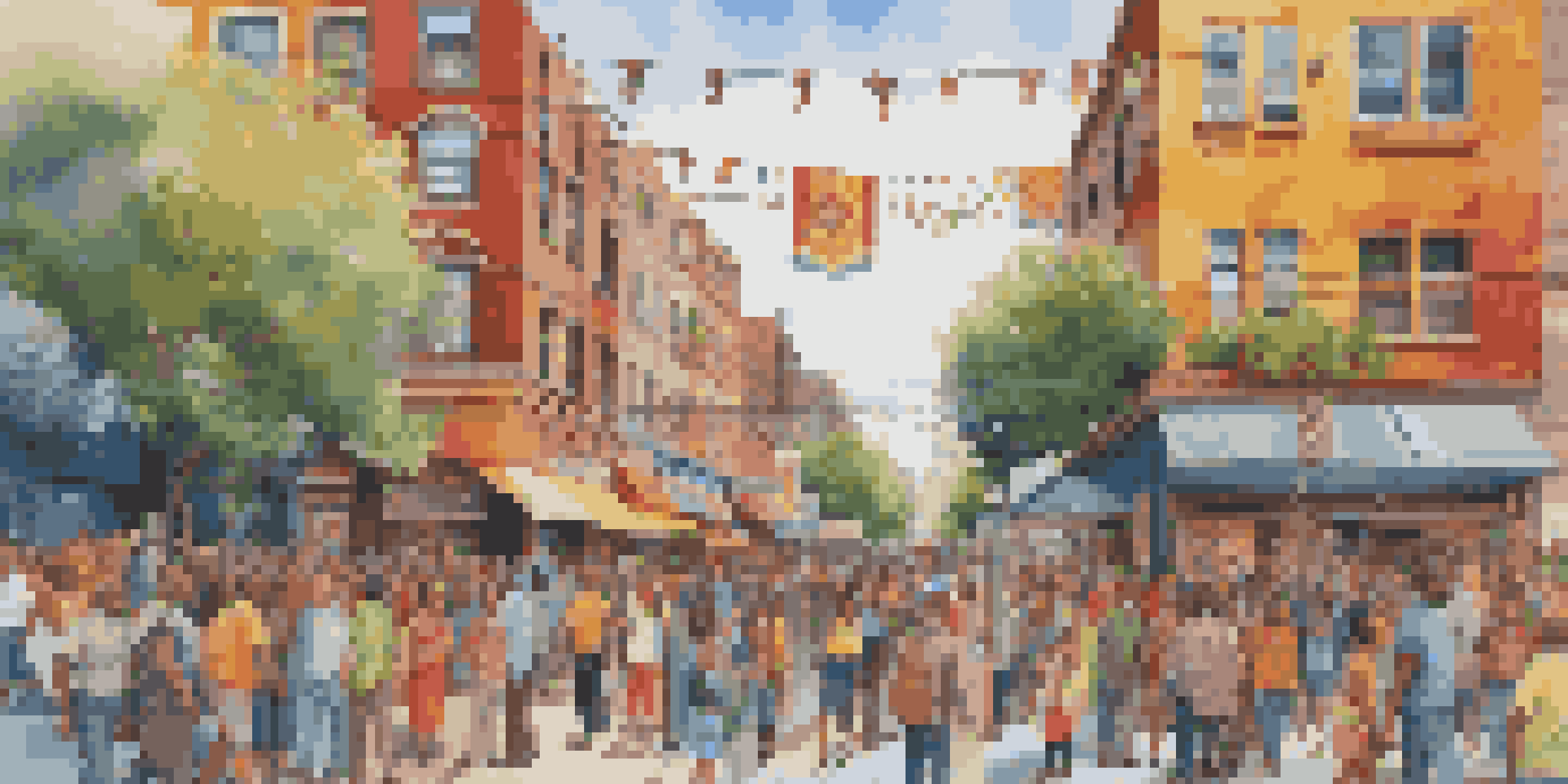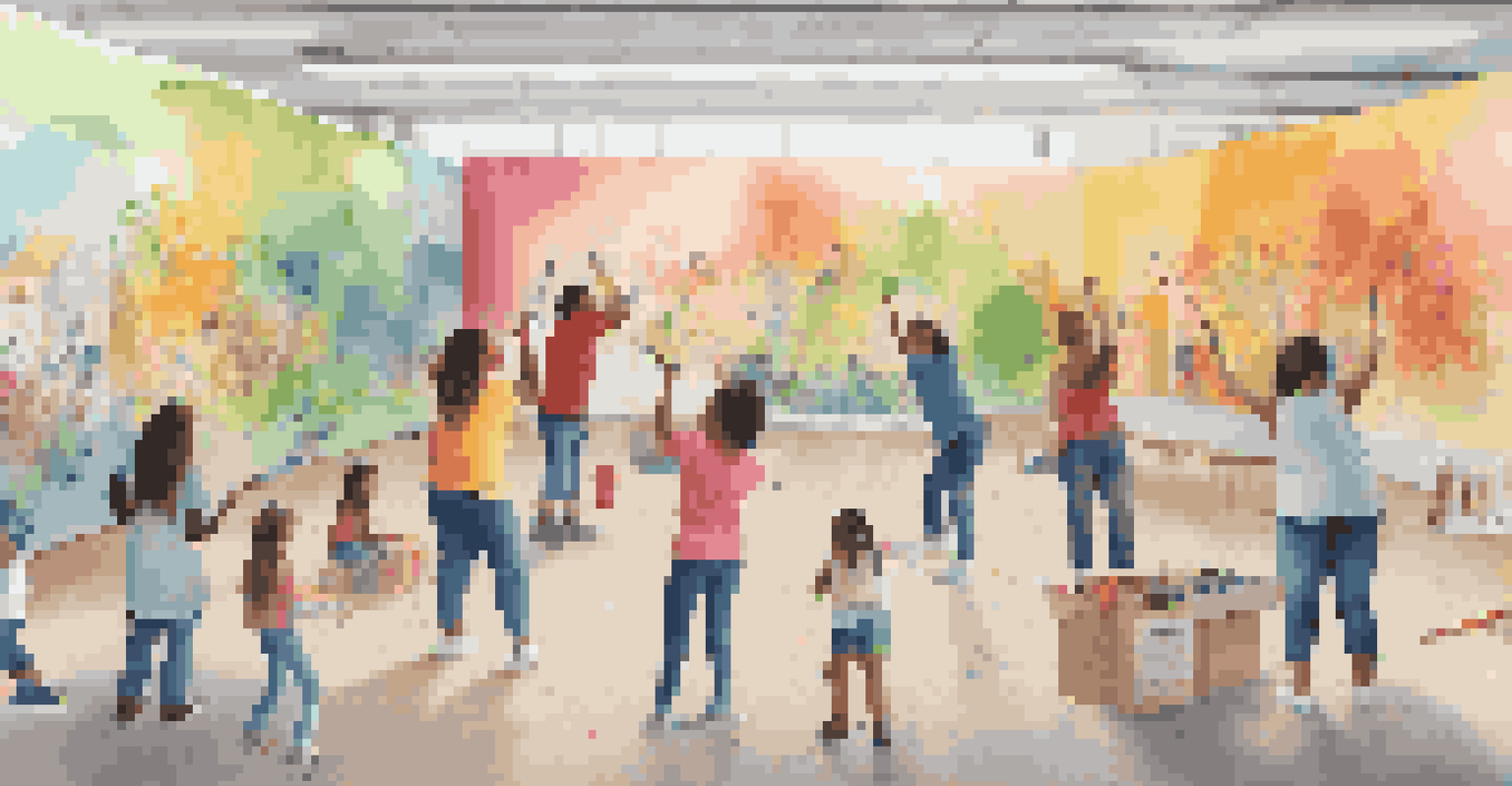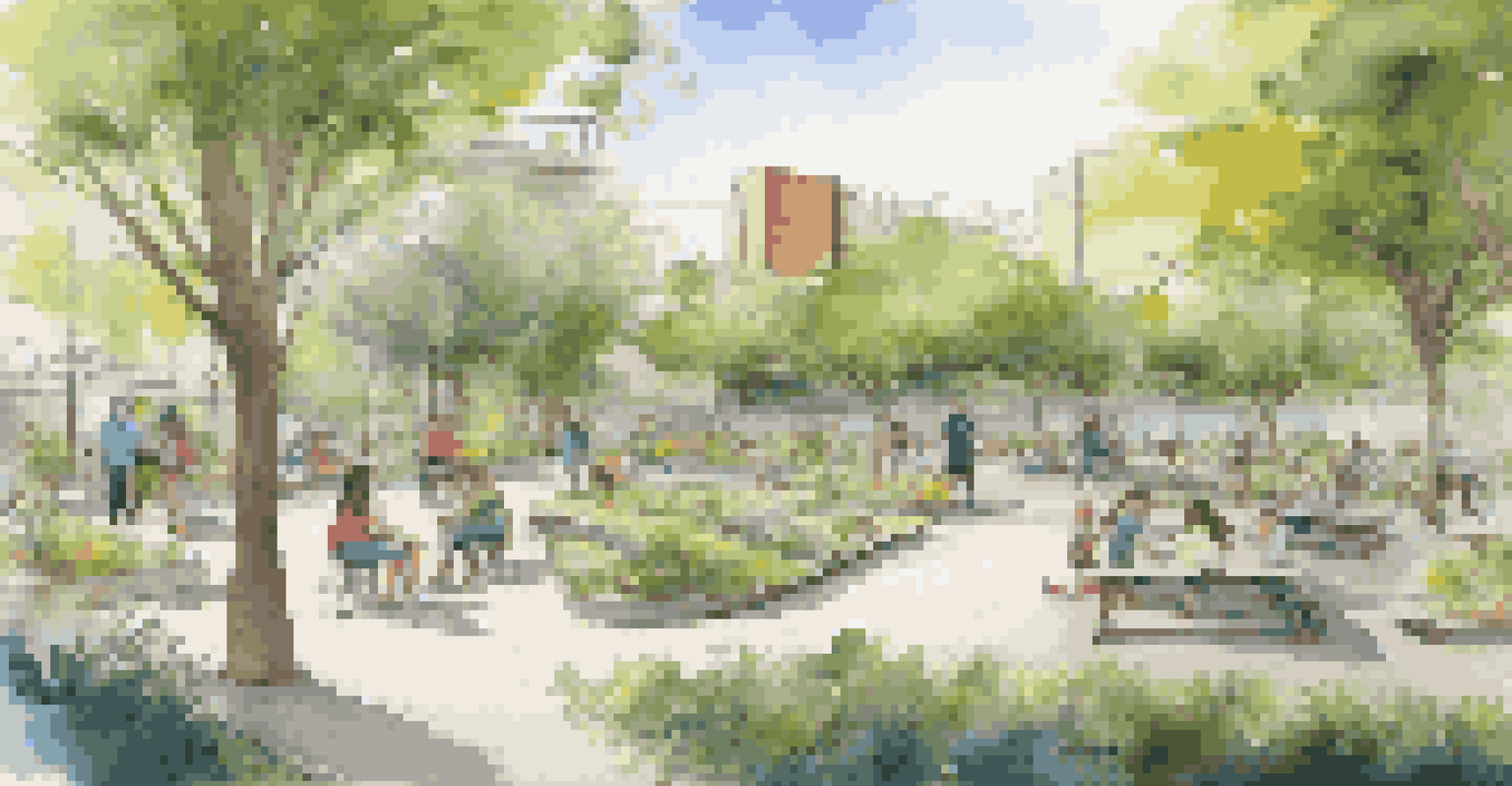The Role of Art in Shaping Local Narratives and Civic Identity

Art as a Reflection of Community Values and Beliefs
Art serves as a mirror, reflecting the values and beliefs of a community. Through various forms of expression, such as paintings, sculptures, and performances, artists depict what is essential to their local culture. This reflection helps residents connect with their shared identity, often sparking conversations about their collective history and aspirations.
Art is not a thing, it is a way.
For example, murals in urban neighborhoods often tell stories of resilience and hope, illustrating the struggles and triumphs of the people. These visual narratives can unite individuals, fostering pride in their heritage and encouraging them to engage more deeply with their community. In this way, art transcends mere aesthetics; it becomes a vital part of the local narrative.
Ultimately, when residents see their values represented in art, it reinforces their sense of belonging. This connection can inspire civic engagement, as people feel compelled to protect and promote their cultural heritage through various local initiatives.
Art as a Catalyst for Social Change and Awareness
Art has the power to challenge societal norms and provoke thought, making it a potent tool for social change. Artists often use their work to raise awareness about pressing issues, from inequality to environmental concerns. By confronting these topics creatively, art encourages dialogue and can mobilize communities toward action.

Take, for instance, the powerful street art that emerged during social movements. These pieces not only beautify public spaces but also convey urgent messages, igniting conversations among passersby. When people engage with this art, they are often inspired to learn more and participate in advocacy efforts.
Art Reflects Community Values
Art serves as a mirror for communities, showcasing their shared identity and cultural heritage.
Thus, art becomes a bridge between individual experiences and broader societal issues, fostering a sense of shared responsibility. As communities come together around these artworks, they often find common ground, strengthening civic identity in the process.
Engaging Youth Through Artistic Expression
Youth engagement is crucial for the vitality of any community, and art plays a significant role in this process. Creative programs that involve young people not only nurture their talents but also instill a sense of pride and ownership in their local culture. Through workshops, murals, or theater productions, they can express their perspectives and contribute to local narratives.
Every artist dips his brush in his own soul, and paints his own nature into his pictures.
For example, a community center hosting art classes can provide a space for teenagers to explore their creativity while learning about their history. As they create, they develop a deeper understanding of their community's struggles and triumphs, shaping their civic identity in the process. This engagement helps cultivate future leaders who are invested in their neighborhoods.
Moreover, when young people see their work celebrated publicly, it boosts their confidence and encourages them to be active participants in civic life. By investing in youth through art, communities ensure that their narratives evolve and remain relevant for generations to come.
Art and Place-Making: Creating Vibrant Public Spaces
Public art significantly contributes to place-making, transforming ordinary spaces into vibrant community hubs. By incorporating artistic elements such as sculptures, installations, or interactive exhibits, cities can enhance their aesthetic appeal and foster a sense of belonging. These spaces become gathering points where residents can connect and share experiences.
Consider a downtown area that features a series of colorful murals depicting local history. Such art not only beautifies the environment but also draws people in, encouraging them to explore and engage with their surroundings. This sense of place can lead to increased foot traffic, benefiting local businesses and strengthening community ties.
Art Drives Social Change
Through creative expression, art challenges societal norms and raises awareness about pressing issues, mobilizing communities toward action.
Ultimately, when art is strategically integrated into public spaces, it enriches the community experience. Residents feel more connected to their environment, which nurtures a collective identity and encourages civic pride.
Artistic Collaborations and Community Building
Collaborative art projects serve as powerful tools for community building, bringing together diverse voices to create something meaningful. When individuals from different backgrounds collaborate, they share their stories and perspectives, enriching the local narrative. This process fosters empathy, understanding, and stronger relationships among residents.
For instance, community mural projects often involve local artists, residents, and even schools, creating a sense of ownership and pride. Participants learn from one another, breaking down barriers and building connections that might not have existed otherwise. This collaborative spirit can lead to lasting friendships and a more cohesive community.
In this way, art becomes a unifying force, encouraging individuals to work together toward common goals. By fostering collaboration, artistic initiatives can strengthen civic identity and promote a sense of belonging.
The Role of Art in Celebrating Cultural Heritage
Art plays a vital role in celebrating and preserving cultural heritage, ensuring that local stories are passed down through generations. Festivals, traditional crafts, and performances often showcase the unique aspects of a community's identity, allowing residents to connect with their roots. This celebration fosters pride and strengthens the bond between individuals and their cultural history.
For example, an annual cultural festival featuring local dance, music, and art can attract residents and visitors alike, creating an opportunity to learn and appreciate the community's heritage. Such events not only showcase talent but also serve as a reminder of the rich tapestry of narratives that shape civic identity.
Youth Engagement Through Art
Art programs for youth foster creativity and pride, shaping future leaders who are invested in their community.
By prioritizing artistic expressions of cultural heritage, communities can ensure that their unique stories are not forgotten. This commitment to celebrating diversity enriches the local narrative and fosters a sense of unity among residents.
Art as a Tool for Documentation and Preservation
Artistic expression serves as a crucial tool for documenting and preserving local history. Artists often capture significant events, traditions, and daily life, creating a visual record that future generations can explore. This documentation helps maintain a sense of continuity and identity, ensuring that the community's narrative endures over time.
For instance, photography projects that focus on everyday life in a neighborhood can reveal stories that might otherwise be overlooked. By showcasing both the struggles and triumphs of residents, these artistic endeavors create a rich tapestry of local history that resonates with viewers. They also encourage reflection on how past experiences shape present and future identities.

Ultimately, when communities embrace art as a means of documentation, they empower residents to tell their stories. This preservation of history fosters a deeper understanding of civic identity and inspires continued engagement with local narratives.